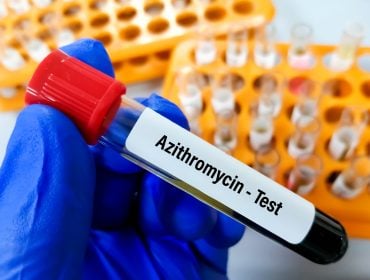Venereal Disease
Commonly referred to as sexually transmitted diseases, a venereal disease (VD) can spread through sexual acts and other skin-on-skin contact. As long as you are sexually active, you are at risk of a VD. These include names you’ve probably heard already:
- Human Immunodeficiency Virus/Acquired Immune Deficiency Syndrome (HIV/AIDS)
- Human Papillomavirus Infection (HPV)
- Herpes
- Chlamydia
- Gonorrhea
- Syphilis
- Trichomoniasis
- Pelvic Inflammatory Disease (PID)
- Pubic lice
Lesions and warts can also appear as a symptom of venereal disease. Dependent upon your diagnoses, a treatment plan can be formulated by a medical practitioner to treat those skin abnormalities.
VD STD
The term venereal disease is also referred to as sexually transmitted disease (STD) or sexually transmitted infection (STI) that are spread from one person to another through sexual activities. Each VD STD can come with a myriad of symptoms:
- Abdominal pain
- Anal itching, swelling, bleeding, soreness
- Painful or frequent urination
- Strong vaginal odor
- Fever
- Abnormal discharge from vagina or penis
- Sores or blisters around or inside the mouth
- Warts or sores on the genital area
Getting a Venereal Disease Diagnosis
If you are experiencing any abnormal symptoms or suspect you have a VD, it’s a good idea to get checked out by your doctor. A physical exam along with getting tested will verify whether you have an STD or not. Also, using a latex condom and other barrier devices correctly will greatly reduce the risk of contracting an STD. The risk of getting an STD will still be there, though, which is why it is important to have conversations with your sex partner about when their last STD test was and if they have any other partners. You can contract these diseases through oral, anal, or vaginal sex.
Whether you’re married, divorced or single, or regardless of sexual orientation you are still vulnerable to contracting an STD. When condoms are properly used, it is highly effective at keeping STDs away, though there is still a risk. Some STIs are easy to treat while others have more complicated ways of treatment.
STIs That Are Asymptomatic
Some STIs show no symptoms at all – asymptomatic. Even though there are no symptoms, there is a risk of passing an STI to a sex partner. For this reason you should always use protection during sexual acts. Also, visit your physician on a regular basis to be screened for STIs so they can diagnose and treat any infection before it gets transferred to another person.

VD STD Symptoms
Signs to look out for if you are infected with an STI:
- Discomfort or pain during sex and urinating
- Bumps, blisters, rashes, or sores on the anus, penis, vagina, testicles, buttocks, thighs, or inside or outside of the mouth
- Discolored or abnormal discharge, even bleeding, from the penis or vagina
- Swollen and tender testicles
- Itchiness on the vagina
- Bleeding after intercourse or unexpected periods
When an STI progresses into an STD, there can be even more discomforting symptoms. Some of these include:
- Memory loss
- Fever
- Weight loss
- Vision or hearing changes
- Fatigue
- Nausea
- Swelling
- Lumps
- Chronic pain
To recap, STIs and STDs are not the same thing. Just remember, infections come before a disease. Some infections are viruses, parasites, or bacteria.
Some STIs do not become diseases if they are treated early. Get tested privately and discreetly to make sure you are free and clear of any STIs today.

STIs
There are more STIs than there are STDs. You might have heard of some – chlamydia, gonorrhea, pelvic inflammatory disease (PID), and human papillomavirus (HPV). Here are a few STIs and their health implications:
Cancer
HPV has some strains that cause cancer, while other strains of it cause no disease. The cancerous strains can create abnormal cell counts in the cervix and other female reproductive organs. This type of abnormal cell count can lead to vulvar and cervical cancer. It can even cause penile cancer in men. Men and women can develop anal and oral cancer.
PID
STIs like chlamydia and gonorrhea can lead to PID if left untreated. Some cases of PID are not caused by chlamydia, gonorrhea, or other STDs, however. How can you get PID?
- Leaving an STD untreated
- Having multiple sex partners
- Having a sex partner that has sex with people other than you
- If you’ve had PID in the past you may be more susceptible to recurrent infections
- At least 25 years old or younger and sexually active
- Douching
- Having an intrauterine device as birth control (IUD). Sometimes within the first three weeks of having an IUD you are more susceptible to having a PID
Tertiary Syphilis
Syphilis is considered an STI since it is an infection. If left untreated it can become an STD. At first, this infection will be round sores around the anus, genitals, or mouth. When it goes untreated, it will progress into a latent stage, where there are no visible symptoms.
About a quarter of infected people will develop tertiary syphilis from here – which can take 10 to 30 years after the first infection. It has serious health concerns when left untreated:
- Heart disease
- Loss of memory
- Spinal cord and brain infections
- Hearing and vision loss
- Mental health implications
Typically, syphilis is treated with penicillin injections, which eradicates the bacteria from the body. Though, this cannot reverse any damage to the body that has been done. If organs, like the heart or brain, have been damaged, then more complicated procedures will need to be done.
Read more about different types of STIs.
VD STDs
Normally, tests need to be done to diagnose an STD. Since some nonsexually transmitted diseases can mimic STDs, it is hard to diagnose just by looking at a patient or off of symptoms alone. Most examinations involve a physical assessment, swabs, collecting tissue, and testing body fluids and blood.
Treatment
There are many forms of treatment for curable STDs, including surgery, antibiotics, and topical medications.
For some treatments, you may be asked by your doctor to not have sex until the STD has been treated completely. They’ll advise you on how long that period of abstinence might be.
VD Prevention
Your best option for preventing STIs and STDs is to abstain from sex. If that is not possible, then there are a few other options:
- Having a mature, honest, and open conversation about sexual history before having any sexual relations with a new partner.
- Getting regularly tested for STIs and STDs should be a part of every sexually active personal annual health exam. Ask your doctor at your next visit to test for these.
- Using a dental dam for oral sex and female and male condoms for vaginal and anal sex are great barriers to use to prevent STIs from spreading.
- Get a Hepatitis B and an HPV vaccination
- Ask your doctor about a prescription for PrEP if you are at a high risk for contracting HIV.
Remember, most STDs are treatable, but some may be incurable. There may be lifestyle changes involved for some, others may threaten your life, and others may have less serious implications.
Be sure to get VD STD tested today to be sure you catch any infection or disease at the earliest stages for the best possible outcome. Even if you do not suspect you have a venereal disease (VD), it’s always a good idea to get checked out just to be on the safe side. We take venereal disease prevention extremely seriously. If you feel the need to get tested, we’re here to help. Our process is private and easy.
Medically Reviewed by J. Frank Martin JR., MD on May 5, 2022
Secure and Confidential
STD testing services
The fastest results possbile - available in 1 to 2 days

Tagged
Categorized As
Author: Esther Jordan
Esther Jordan has been a writer ever since she can remember. She has always loved the free gift of self-expression through journaling, creating stories, and sharing life experiences in front of audiences. Public speaking and creating content has been a strong suit of hers since high school. Immediately after college, she received a paid position as an search engine optimization (SEO) writer in 2010 when SEO was still a very brick and mortar concept for a lot of small businesses. It was a time of do-it-yourself websites and online magic that everyone wanted and either referred to it as SEO or pay-per-click (PPC).




